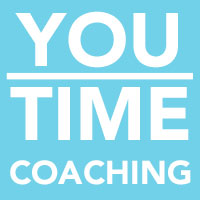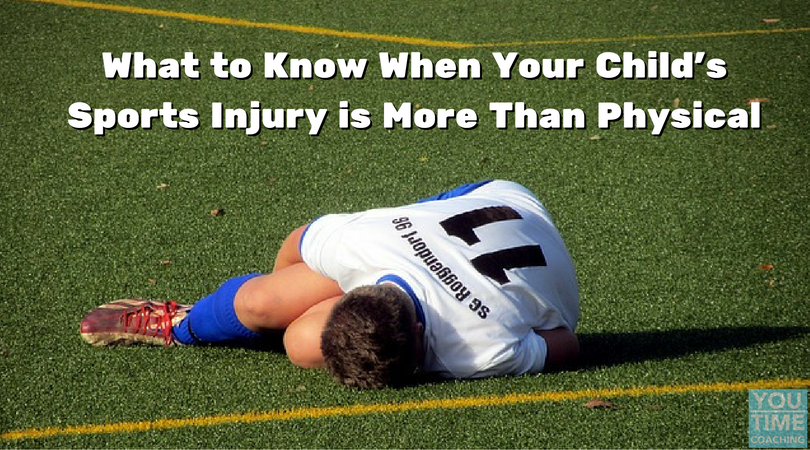“Tough it out and get back in there!”
Black and blue ankle sprains, torn knee ligaments, and concussions have found a way to be commonplace during a child’s high-school and college athletic career. In a world where concussions in young people are making headlines every other day, many coaches, parents, and other support systems have their radar on high… but why?
You see, injuries ranging from severe concussions to sprains have multiple dimensions to a young person. The injury sustained itself has physical impairment in which a Doctor can diagnose and create a treatment plan for, but the thoughts and beliefs about the injury create a real mental dimension.
“I can’t believe my season is over.”
“I didn’t really want to play anyway.”
“I am going to lose my scholarship”
“The break isn’t that bad, coach said I’ll be back in a couple days…”
The “invisible wounds” (anxiety, depression, anger, denial, frustration, changes in motivation) of an athletic injury can have substantial impacts on your kids academics, social life, emotional well-being, and ability to recover.
PLEASE read on as one of our coaches, Ido Heller, walks you through what an injury really could mean to your kid, and what you can do as a support to ease the road ahead.
A CRUCIAL FACTOR IN YOUR YOUTH’S SPORTS INJURY:
Experiencing a permanent injury may lead to feelings of vulnerability and despair. Although the injury itself is the primary stressor, the perception of the injury is a crucial factor toward rehabilitation. The cognitive appraisal perspective suggests that the same injury may elicit different levels of stress in different people. For example, knee injuries that include severe pain, grinding, limited movement and visible deformity, are likely to have a more significant impact on (for example) a breaststroke swimmer, who heavily relies on legs and knees’ performance to generate propulsion, than a freestyle swimmer and non-athletes. Given that athletes’ identity and financial status (income or scholarship) is based on their ability to perform physically, such a severe injury makes them prone to depression.
[bctt tweet=”Experiencing a permanent injury may lead to feelings of vulnerability and despair. So how can you best help your child?” username=”youtimecoaching”]
The way athletes interpret their injury determines their emotional response (frustration, sorrow, relief), and ultimately their behavioral response (loneliness, sluggishness, devotion). Though scholars (e.g., Livneh, 1986; Livneh and Antonak,1991) suggest a general reaction pattern of individuals who experience a chronic injury disability (shock, realization, mourning, acknowledgments, and coping/reformulation), my personal experience in working with swimmers is more consistent with other researchers such as Brewer (1994) who assert that athletes’ physical, emotional and psychological foundation may affect this response pattern.
The fact that injury has occurred is less important than its meaningfulness; there is an opportunity for caregivers such as parents to assist their loved ones’ athletes who are suffering from chronic injury by discussing the meaning of the injury and resulting changes in lifestyle.
POTENTIAL CHALLENGES AND OPPORTUNITIES:
Shock, confusion, and feelings of being overwhelmed are usually observed in the immediate aftermath of an injury; athletes may reject any type of assistance because they view such help as unnecessary. Therefore, in the first phase, caregivers should provide only a empathetic and compassionate support.
When the individual begins to realize the weight of their injury, it is important to identify various traits that represent psychological resilience (positive emotionality, hardiness, ego resilience, hope) and leverage these to assist athletes in overcoming the mental and physical hardships of rehabilitation. For example, characteristics successfully used during the swimming season, such as toughness, determination, and accuracy can be pointed out by you (the parent, the friend, the coach) and generalized by the swimmer in overcoming challenges of the rehabilitation process.
Making a positive attribution to past success (optimism) is the foundation of individuals’ ability to take on and put in the necessary effort to succeed at challenging tasks now and in the future. As noted in innovative work of Livneh (1986) and phases of recovery, following injuries athletes may experience a lack of hope, distress, reactive depression, and internalized anger. Because it is a relatively extended period, some people such as coaches and peers may make statements such as “Tough it out!” and “Stop feeling sorry for yourself!” which are counterproductive. Instead, you, the caregiver, should encourage and nurture an environment that is responsive to the athlete’s needs.
[bctt tweet=”Setting goals are also an essential part of rehabilitation because it stimulates the athlete to think about alternative ways of improving performance and wellness.” username=”youtimecoaching”]
Setting goals are also an essential part of rehabilitation because it stimulates the athlete to think about alternative ways of improving performance and wellness. The athlete (or specifically, the breaststroke swimmer in our example above) must be assured that even though physical participation in sports as once experienced is no longer possible, there is still the challenge to channel many of her abilities and skills toward successful rehabilitation; then, meaningful life.
ADHD, ATHLETE & INJURY:
Athletes with ADD/ADHD are more prone to be injured than their counterparts without ADD/ADHD in open activities, training, and competitions. The underlying circumstances of injury risk in athletes with ADD/ADHD are that they anticipate fewer negative consequences, expect less critical injury, and report a higher likelihood of engaging in precarious behavior though they identify hazards at similar levels, compared with athletes with no ADD/ADHD. Following injuries, overcompensation attitude (i.e., the desire to work too hard in the rehabilitation process) is also more likely to occur among the former group. Hence, you the caregiver must nurture a stress-free positive environment, reinforce productive mindful behavior before and following an injury, and last but not least, present the various symptoms of the injury as well as what symptoms could be aligned with ADD/ADHD. This will allow your child to start compartmentalizing what is going on, help reduce stress, and will provide at minimum a chance to communicate about the mental challenges of their injury.
References:
Brewer, B. (1994). Review and critique of models of psychological adjustment models to athletic
injury. Journal of Applied Sport Psychology, 6, 87-100.
Gunther, M. (1971). Psychiatric consultation in a rehabilitation hospital: A regression
hypothesis. Comprehensive Psychiatry, 12, 572-585.
Livneh, H. (1986). A unified approach to existing models of adaptation to disability: I. A model
adaptation. Journal of Applied Rehabilitation Counseling, 17, 5-16.
Livneh, H., & Antonak, R. F. (1990). Reactions to disability: An empirical investigation of their
nature and structure. Journal of Applied Rehabilitation Counseling, 21(4), 13–21.

